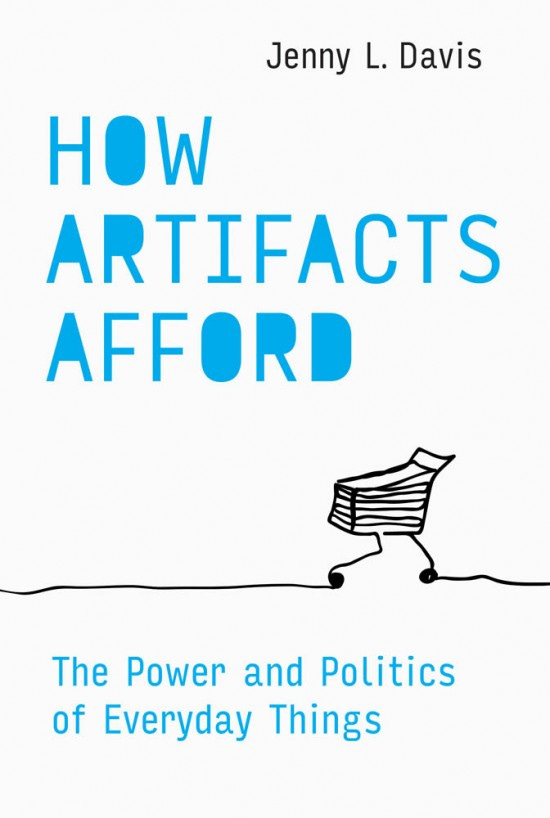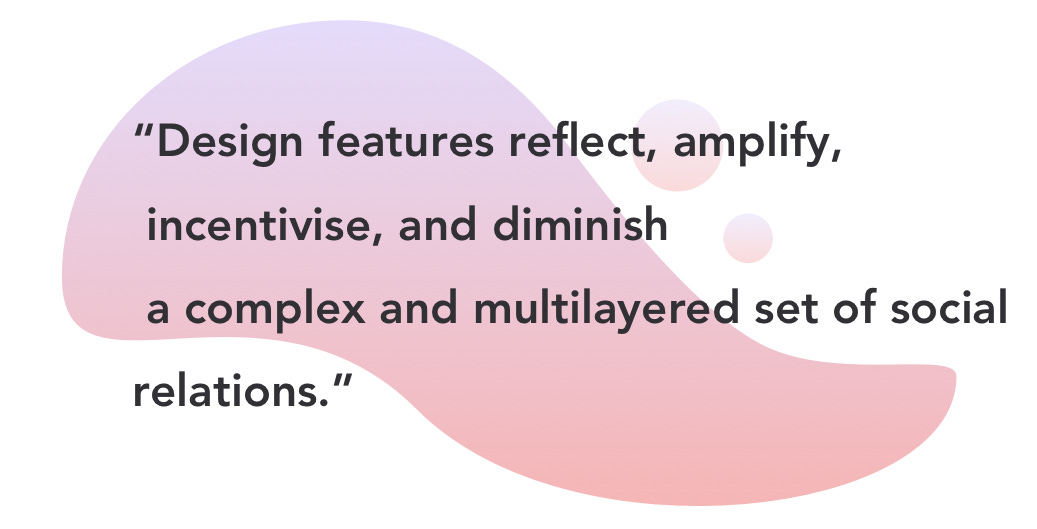What are affordances? An interview with Jenny L. Davis
Social psychologist and technology theorist Jenny L. Davis brings clarity to the question with her affordance framework.
This is part of Disassemble, a philosophy of tech newsletter aimed at those interested in digital products.
“When a man is tired of London, he is tired of life; for there is in London all that life can afford."
— Samuel Johnson.
I didn’t move to London from Canada because of this quote. But it definitely contributed to my decision, however slightly.
I had already been considering moving when I came across Mr. Johnson’s droll observation, yet there was something about the phrase ‘all that life can afford’ that made me feel sure it was the right thing to do, that the future would be pregnant with possibility.
This verb, ‘afford’, and its noun ‘affordance’, seem to have a capacity to powerfully articulate our relationship to our world. I’ve used these words a number of times in previous newsletters. They’re hugely important in the field of design, given how they interact with the study of things and how things ‘thing’.
They seem to be able to describe neither a subject nor an object, but both. Yet this power means that an ‘affordance’ has a sort of floaty nebulousness - it’s difficult to pinpoint what exactly it refers to.
I could spend pages wrestling with a definition, but I thought it wise to get someone whose expertise lay in this precise area to help out. So I contacted Jenny L. Davis, a social psychologist and technology theorist, who was kind enough to answer my questions on what affordances are. She recently published the excellent How Artifacts Afford: The Power and Politics of Everyday Things. I strongly recommend you read it - her answers below offer a taste of what it spells out, namely a powerful and unique framework on why and how affordances matter.
In your book, you discuss affordances as being both under-theorised and over-theorised. You note that there's been a lot of discussion over several decades about how exactly to conceptualise affordances. Given these challenges, how do you succinctly describe affordances to someone who has never heard of them?
Affordances are how the features of a technology —its technical specifications—affect how the technology functions.
All technologies have inbuilt design features, or technical specifications. These technical specifications enable and constrain how the technology operates. Technical operations directly affect the utilities users can perform with a technology and also affect the social impacts of that technology.
The direct and social outcomes of design features are not set in stone, but they do make some outcomes more likely and other outcomes less likely. “Affordances” mediate the relationship between technical features and outcomes of use and deployment.
An example may help ground this description:
Instagram has a simple one-click share feature that is interoperable with most digital devices and with other platforms (e.g., Facebook, Twitter). This feature makes it easy to share images publicly and privately. The feature also has flow-on social effects, in that documentation and sharing become normative and expected, while social engagements are (re)interpreted in terms of their documentability.
Thus, the features of the technology affect what people do with that technology, and also affect what the technology does with the people who encounter it. These dynamics are represented through the affordances of “shareability” and “interoperability,” both of which are relatively high for the Instagram platform (i.e., content is highly shareable and the platform seamlessly interoperates with a variety of other products and services).
In the field of design, we talk a lot about affordances, stemming from Don Norman's definition of them in his book, The Design of Everyday Things. This definition, at least in practice, usually amounts to little more than 'perceived signifier'. A scroll bar, for example, might be described as 'affording' moving the viewport of a screen up and down. Affordances become a user's subjective evaluation directed at determining if a digital object affords a particular action.
But in the original formulation of affordances, James J. Gibson suggested that affordances were emergent properties of a bi-directional relation between subject and object. A hole, for example, affords falling into, even if a person does not perceive it. Can you shed any light on how these differences matter, and what direction do you take?
Both Norman and Gibson situate affordances as a relationship between material objects and human subjects, but each puts varying emphasis on the material element (Gibson) versus the human element (Norman).
Gibson’s articulation was more philosophical, while Norman’s more practical (i.e., how can designers make products that communicate effectively with users?).
I tend to preference the practical, and my thinking is certainly indebted to Norman. At the same time, there’s more to the social element of design than signification or communication. Design features reflect, amplify, incentivise, and diminish a complex and multilayered set of social relations. Communication is part of that, but not all of it.
In the very first instance, we have to question to whom the communication is legible, and for whom it remains opaque. More generally, a singular focus on communication sets up human-technology relations as ontologically dyadic—a relationship between users and products. In fact, technologies and their relations are socially and structurally embedded, reflecting and affecting individual, interpersonal, and systemic social patterns.
All of this complexity calls for conceptual tools that clarify and simplify. Affordances can’t do it all, and through the years, it has become overloaded. Affordance is a useful concept, but every concept has analytic limits. In the book, I transform “affordance” from a saturated concept into an operational model called “the mechanisms and conditions framework.” The model acts as a scaffold that makes sociotechnical analyses tractable while optimizing for depth, nuance, and precision.
In your book you take forward this 'mechanisms and conditions framework' as the primary method of analysing affordances. You discuss how this framework focuses on how artifacts afford rather than what they afford. Why is this distinction important?
A central premise of the book is shifting affordances’ orienting question from what artifacts afford to how artifacts afford, for whom, and under what circumstance?
As an orienting question, what artifacts afford suffers from two underlying fallacies in its representation of human-technology relations: binary effects and universal subjects.
Binarism depicts the effects of a technology as alternatively inevitable or impossible; either an artifact affords some function, or it does not. This binary presence/absence misses the nuanced reality in which design features push and pull with varying degrees of intensity (hence, “nudge” as a buzzword in the field of digital design). How artifacts afford recaptures this nuance, operationalized in the model as the “mechanisms” of affordance—request, demand, encourage, discourage, refuse, and allow.
Universalisms, the second fallacy, assume that a technology operates identically for all those who encounter it under any and all circumstances. In practice, we know that technological effects vary between people and across contexts. For example, skin sensors operate differently for people with light skin than for people with dark skin, as do criminal sentencing algorithms. Or for a more mundane example, mobile phones afford differently for the same user when the phone is new compared to the phone’s affordances over time as the user gets acquainted with hardware and software features. As a user becomes familiar with the device, new possibilities emerge that were once unavailable. Asking for whom, and under what circumstances?—the “conditions” element of the model—captures within and between-subject variability in human technology relations.
Thanks Jenny for that sharp elucidation.
We’ll continue this interview in the next issue of DisAssemble, where we’ll discuss why affordances are important to digital product design.
Be sure to follow Jenny on Twitter @Jenny_L_Davis.
Jenny is a Senior Lecturer in the School of Sociology at the Australian National University. Her work addresses human-technology interaction, role-taking, and the ways politics, power, and values integrate into technological systems.
Jenny holds an ARC DECRA Fellowship for the study of ethics in Australia's technology startup sector and is a chief-investigator on the Humanising Machine Intelligence project.




